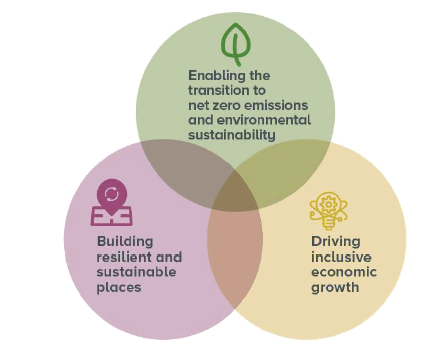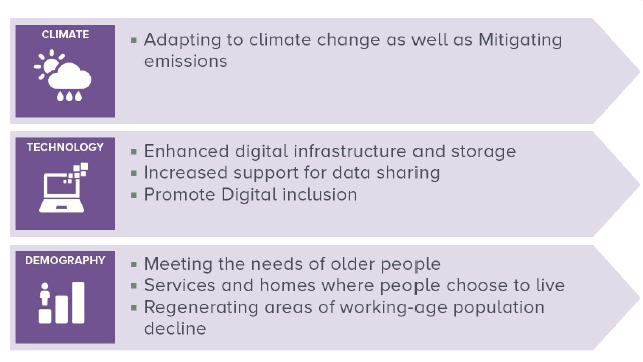Investing for jobs: capital spending review framework 2021-2022 to 2025-2026
This Capital Spending Review Framework supports transparency with Parliament, Local Government and other partners about the fiscal context, and our financial assumptions, in advance of publishing formal multi-year capital budget allocations.
The Strategic Context
Although the Capital Spending Review and draft Infrastructure Investment Plan are closely linked, and most capital expenditure is on infrastructure, it is important to note that capital itself can support a wider range of activities. In particular, it can support research, creation of financial instruments such as debt or equity, or job creation and retention through investment in Scottish businesses, for example to boost innovation.
Around 90% of our capital investment in 2020-21 was directed towards infrastructure.
This Capital Spending Review Framework is published alongside the draft Infrastructure Investment Plan 2021-22 to 2025-26[3]. The two closely align, with the Infrastructure Plan setting out the strategy, and the Capital Spending Review ensuring that priorities are fully funded or financed. They have both been prepared to support delivery of projects and programmes with improved outcomes and benefits within three themes:

As the draft Infrastructure Investment Plan sets out, we need to adjust the balance of investment in favour of renewing and extending the life of our existing infrastructure, both on environmental and value-for-money grounds. As such, the Capital Spending Review will target a material uplift in capital maintenance type investment, relative to current levels of investment, working towards doubling such annual investment over the next 5 years.
This Capital Spending Review will also address the significant near-term challenges presented by the COVID-19 pandemic, recognising the profound impact the virus has had on our whole way of life, and the role infrastructure has to play in helping businesses and communities to adapt and recover.
Alongside the harmful consequences of COVID-19, we have seen a number of positive shifts as people's lives have become more home-based, for example towards active travel or to make more use of digital services. Harnessing these changes will be key. The draft Infrastructure Investment Plan highlights the challenges and opportunities that our capital investment can help address, summarising the shifts in investment we intend:
- Investing in digital connectivity to help businesses and users wherever they live and work, and accelerating digital service provision, reducing the need to travel
- Supporting safe active travel and local, accessible public services in vibrant places
- Supporting green and blue spaces to provide access to nature
- Supporting positive social change such as new approaches to rehabilitation and reduced homelessness
- Whilst not all is infrastructure, we will invest in job-creation to preserve and generate employment to support economic recovery
The Advisory Group on Economic Recovery considered how best Scotland might address the economic harm that has arisen from COVID-19. A key recommendation of the group called on Scottish Ministers to maintain the National Infrastructure Mission. We are delighted by this recognition of the value our approach can bring.
Recognising the long-term nature of infrastructure provision, and the need to future proof investment, the Capital Spending Review and Infrastructure Investment Plan also address key long-term trends, including:
- Tackling and managing climate change
- Accommodating technological developments
- Adapting to demographic change
These are described in more detail in the draft Infrastructure Investment Plan. Below is a summary of the key adjustments in our investment approach that will be required to respond well to these long-term trends:

In April 2019, the First Minister recognised we are facing a climate emergency. We need to invest in the required actions to reduce emissions to meet our ambitious net zero target level and to address the potential disruption we face from extreme weather events and the climate change already underway.
Recognising that emissions in 2025 need to be around 11 Mt CO2e a year lower than our 2020 target level, we have announced an additional £2 billion capital investment over the course of the next Parliamentary term. Scottish Government investment can never be the whole answer to the climate emergency challenge, but can supplement action at international and UK level, by Councils, by businesses and service users.
We have already committed to those projects that form the initial £1.6 billion tranche of our new investment. Annex A gives full details, alongside the 2020-21 breakdown of £1.8 billion current low carbon investment, which has already been shared with Parliament. This annual investment level will be at least preserved, enabling our green economic recovery.
Contact
There is a problem
Thanks for your feedback